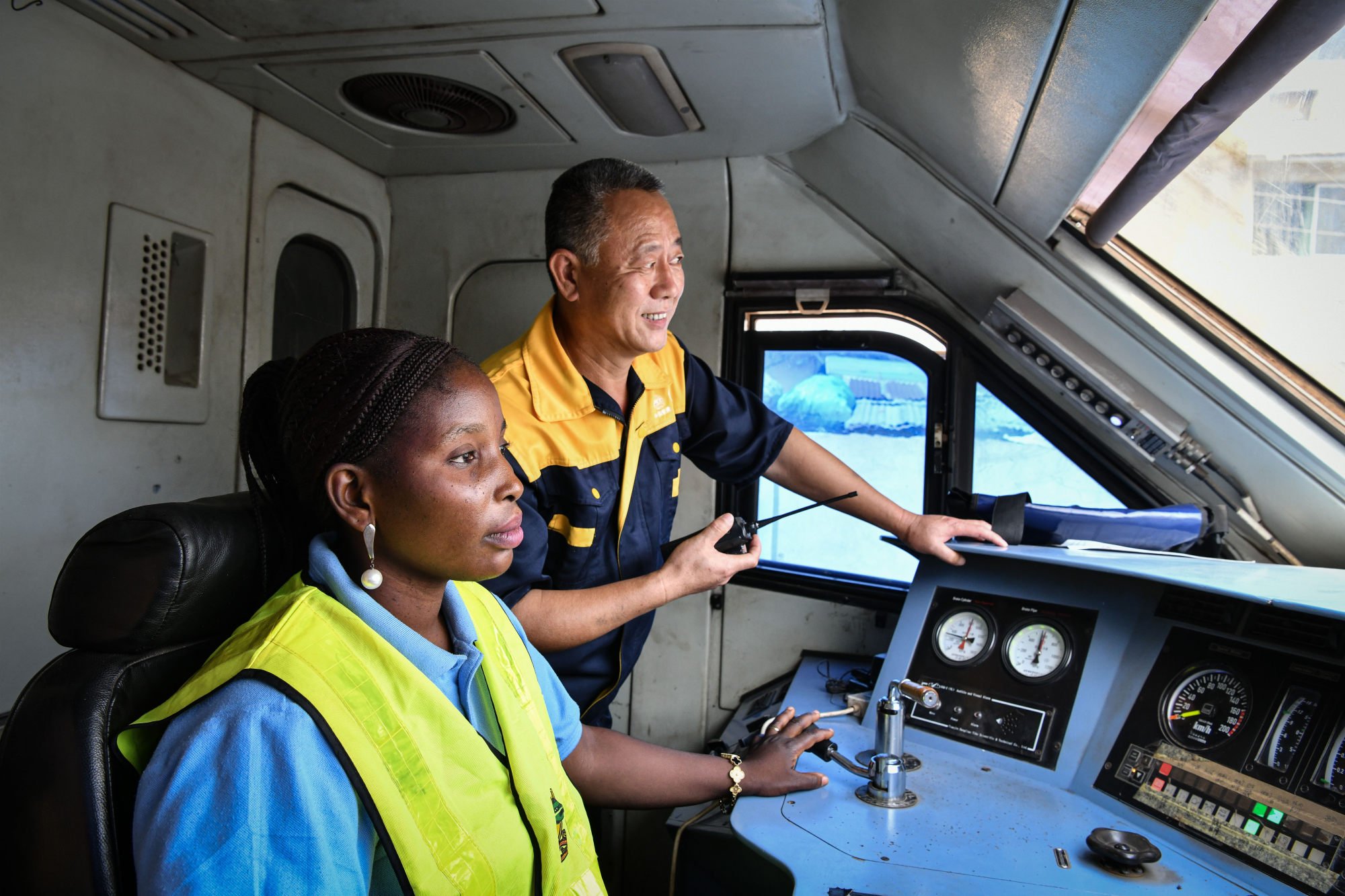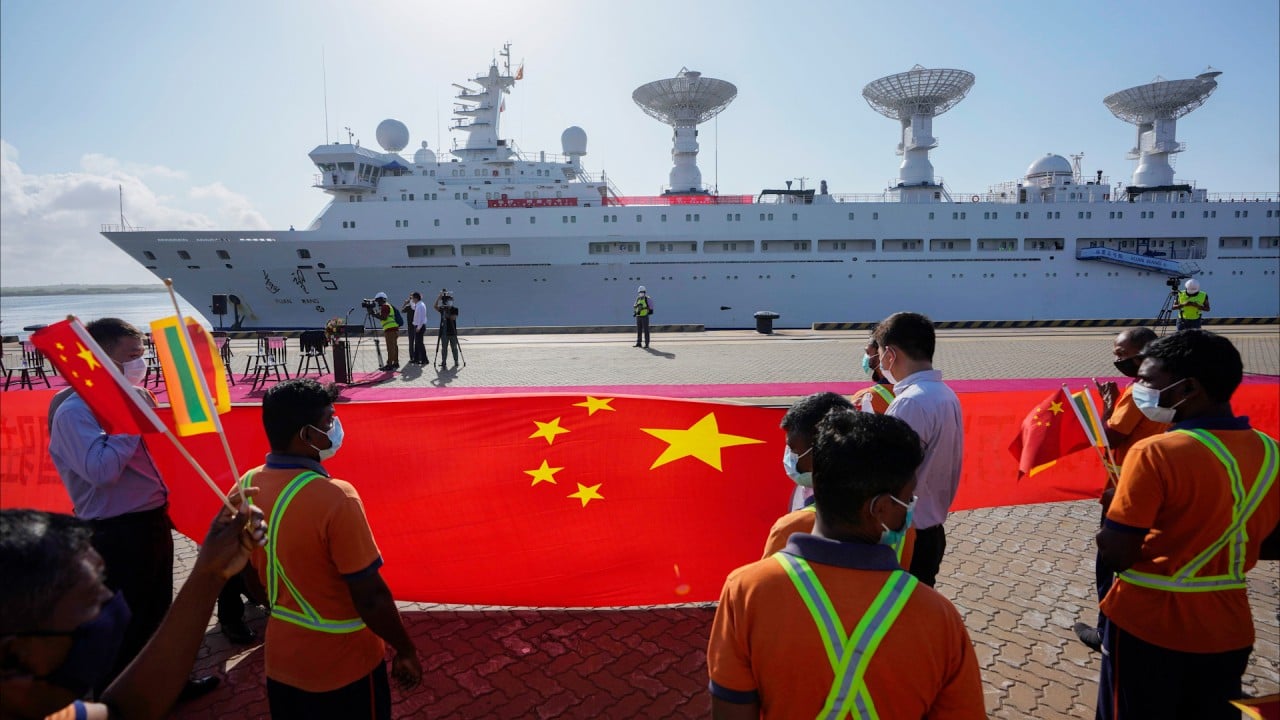Thousands of Chinese workers leave Africa as lack of funding and impact of pandemic take their toll
The IMF paper said the revenue of Chinese companies engaged in engineering and construction projects in Africa reached its peak in 2015, after which point it began gradually declining. In 2021, that revenue figure was US$37 billion, a 3 per cent drop from the previous year.
According to data compiled by the China Africa Research Initiative (CARI) at Johns Hopkins University’s School of Advanced International Studies (SAIS), in 2022, the number of Chinese workers in Africa fell again, hitting a new low of 88,371.
“So construction was still down in 2022 from Covid; China did not open its borders until January 2023,” Deborah Brautigam, a professor emerita in international political economy and CARI director, said.
Looking at the figures for 2021, CARI data showed that of the 93,526 Chinese workers in Africa, 72,526 were in project contracting and 21,000 were in services, including manufacturing labourers, hotel workers and cooks. In 2022, there were 62,686 Chinese workers in project contracting and 25,685 in services, according to CARI.
China targeted by climate activists over contentious East Africa oil pipeline
CARI data also showed that in 2013, Angola had 50,526 Chinese workers but the number dropped to 6,784 by 2022. Likewise, Algeria had 91,596 Chinese workers in 2015 but by 2022, the number of Chinese workers had plummeted to 7,462.
Dominik Kopinski, an associate professor in the Institute of Economics at the University of Wroclaw and senior adviser at the Polish Economic Institute, said that in Angola, the decline was directly linked to two factors: the economic crisis following the post-2014 oil price plunge and the drying up of Chinese loans.
He said Angola is notable because, after the civil war ended there in 2002, the government essentially outsourced national reconstruction to Chinese firms. This resulted in a significant influx of Chinese SOEs, subcontractors and around 300,000 migrants.
“Today the estimates vary, but my guesstimate based on the interviews we did back in 2022 is that there are around 20,000 Chinese migrants living in Angola,” he said.
Kopinski expects that figure to rise, but he predicts it will be a moderate and gradual increase – nothing nearly as dramatic as pre-2014. He said large loans and multibillion-dollar infrastructure projects are very unlikely to return.

“Chinese migration in Angola has become more reminiscent of Portuguese migration after 1910, with small family businesses, traders and farmers venturing into inhospitable lands outside of large urban areas, where others do not dare to go,” he said.
Not every African country has seen falls, though. Egypt is bucking the trend, recording increases in Chinese workers in recent years, albeit small ones. Massive projects at the Suez Canal as well as building work of the new administrative capital in Cairo have been undertaken by Chinese companies. It has meant the number of Chinese workers there has risen from just over 2000 in 2015 to 7,358 in 2022.
It is a similar story in the DRC. Chinese investors and immigrant workers have continued to follow the fortunes of the country’s mining industry, which provides most of China’s cobalt. The number of Chinese workers in the DRC rose to 8,705 in 2021 from 5,155 in 2014. That figure does not include many more undocumented Chinese immigrants who run small businesses, including in artisanal mining.
But while the overall presence of Chinese workers in Africa has declined as the number of Chinese projects have reduced – as well as due to the Covid-19 pandemic – that may not tell the whole story.
There are also indications that some Chinese companies have been conducting training and employing local workers in their construction projects.
That explains the recent emergence of the so-called Luban workshops, a Chinese-backed vocational training programme initiated in 2016 under President Xi Jinping’s transcontinental Belt and Road Initiative.
The workshops contribute to educational advancement by building schools, introducing technology and organising trips to Chinese vocational schools for local educators.
CARI’s Brautigam said the presence of Chinese workers is closely correlated with available project finance, such as bank lending in Angola and Republic of Congo or commodity export revenues in Algeria.
She said Chinese project lending flattened out and then declined after the peak of 2013, since Africa looked riskier as the price of commodities, like oil, fell sharply.
“So fewer new projects were started and fewer workers were sent,” Brautigam said.
She said some of the decline is also because research shows that Chinese companies increasingly hire local workers the longer they are present in a country.
“And of course the sharp drop in 2020 and 2021 reflects the impact of the pandemic,” she said.
Going forward, Brautigam said there will be a recovery but not at the same levels that were seen previously.
“We are unlikely to see a return to the high numbers of the past decade,” she said.
